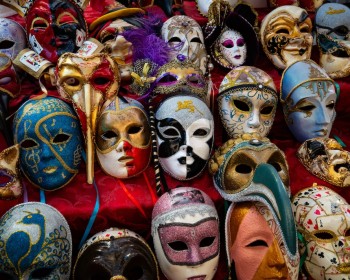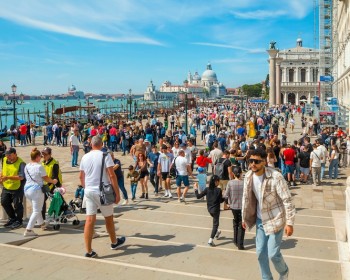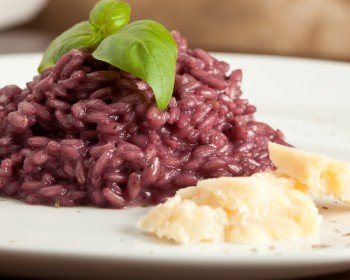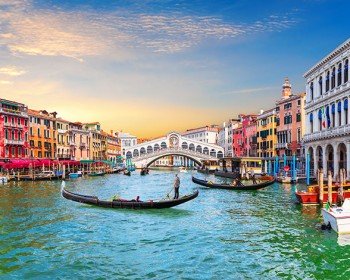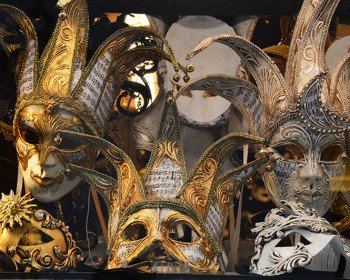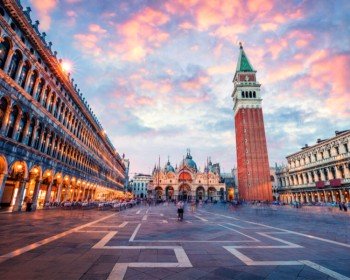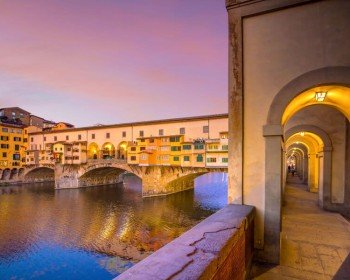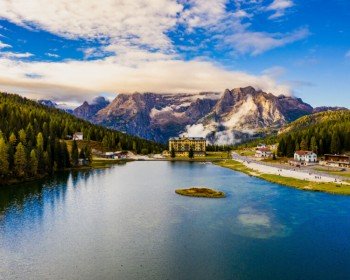Ok, maybe knowing that the author liked Italy is not such a shocking thing. What might surprise you is that, as far as we know, Shakespeare spent all his life in England. Italy was something he had probably just heard or read about. His deep knowledge of Italy brought people to think that he was not the glovemaker’s son from Stratford-upon-Avon, but somebody else from the upper class who was more likely to afford traveling around Europe. One of the most accredited names hypothesized is that of De Vere, Earl of Oxford, who was a regular at Italian courts.
Anyway, we are not here to investigate who Shakespeare really was. For now let’s just be grateful for the incredible contribution he gave to literature with his timeless works, whatever his real identity was. What we want to underline here is that not only are his works set in Italy, very often they also take place right in Veneto. Romeo and Juliet and The Two Gentlemen of Verona are set in Verona; The Taming of the Shrew in Padua; and even A Midsummer Night's Dream allegedly takes place in Sabbioneta (close to Mantua, in Veneto) and not in Athens, as it seems, since the small town was called little Athens during the Renaissance.
Another inspiring place for Shakespeare was Venice. This city is simply one of a kind. It is poetry itself. It was just natural for Shakespeare to be inspired by its unique beauty. Its unique environment, streets, places and canals provided the perfect landscape for two of his greatest masterpieces, Othello and The Merchant of Venice.
Let’s sum them up, just to give you an idea of what we are talking about or to refresh your memory. You can keep on reading… There will be no spoilers, promised.
Othello is a handsome Moorish general, who has left for Venice with the lieutenant Cassio to help the Venetian Republic defeating the Turkish army. Othello is married to the beautiful Desdemona, who finally reunites with her husband, escorted by the ensign Iago and his wife Emilia. Selfish, untrustworthy and a real schemer, Iago is the antagonist of the story. He is the kind of character you hate without even going through the plot. You just hate him from the start. First, he tries to remove Cassio from his office; then he tries to convince Othello that Desdemona is cheating on him. Othello is the main character of the story, yes. We all agree on that. Anyway, everything happens because of Iago’s vile acts aimed at destroying other people’s lives and you do not even fully understand why. Maybe he does it for envy, maybe for meanness, maybe for a sort of perverted fun, maybe a combination of the three. Maybe he does it just because he sucks as a human being. Who knows.
As we were saying before, there is another Shakespearian play set in Venice, The Merchant of Venice. His name is Antonio and his friend Bassanio begging him for money. Bassanio wants to worthily court his beloved Portia, but Antonio cannot afford the loan. So they turn to Shylock, a rich Jewish usurer. He hates Christians in general and Antonio in particular, since he negatively affects his business by borrowing money without asking for returns and insults Shylock publicly. Anyway, Shylock grants the loan and names Antonio as the guarantor. According to the terms of the loan, if the two friends do not settle their scores in three months, Antonio will have to pay with a pound of his own flesh. Everything seems to go well until the ships they bought using Shylock’s money get lost in the sea. Shylock brings Antonio to the court in order to assert his rights… Sounds tangled, does it? Well it is, and this is just the beginning of the story. By the way, we promised there would have been no spoilers. If you want to find out more, read the play. It is really thrilling.
This is more or less what happens in the two stories. Hopefully Shakespeare will forgive us for being so concise. In our defense, we can say that we are not here as storytellers today. Without investigating the reasons why Shakespeare loved Veneto so badly, what we want to do is to propose you an alternative itinerary for your trip in Venice. It might be interesting to retrace the places of these two absolute masterpieces set around the floating city.
Let’s start with Othello. Just in front Saint Mary of Health Basilica, Palazzo Contarini Fasan stands. Traditionally acknowledged as Desdemona’s house, it is a small, but very elegant Gothic building with huge balconies on its beautiful facades.
Through the years, many hypotheses have come out about the occupants of the Palace to guess who inspired the character of Othello. There are two accredited theories. One wants Othello to be Nicola Contarini, a heroic warlord who fought against the Turkish army in the very same years of Shakespeare’s story. Apparently, his skin was so dark that he was called the Moorish. According to another legend, Nicola Contarini was involved in a dramatic affair with his wife because of his insane jealousy.
Cristoforo Moro, in English Cristiano the Moorish, is another inhabitant of the palace that could have inspired the character of Othello. He was the Admiral of the Venetian fleet during the first years of XVI century. He married a rich woman known as the White Demon, which is the literal meaning of Desdemona. Moreover, their marital life gets lost in a series of intrigues and mysteries, which fairly remind of those of Othello’s.
For what concerns the Merchant of Venice, of course one of the main settings is the Jewish ghetto. Sadly, Venice was the first city to establish such a thing in Europe, with the word ghetto itself coming right from old Venetian. Despite the unhappy outcomes of the institution of the ghetto, at first it was created to protect the Jewish community, since the Doge considered it an important economic resource for the Republic. During the Renaissance, it was actually a very lively and advanced place. Its splendor still remains nowadays, as you may see from its architectural and artistic heritage. We heartily recommend visiting its five synagogues from the three leading artistic movements of the ghetto, the Ashkenazi, the Italian and the Sephardic ones.
Another place you should have a look at is the gorgeous Doge’s Palace, where courthouse scenes take place in the Merchant of Venice. Its construction was long and troubled, as it was reconstructed many times since its first project in 810. Today it looks like a huge fortress in Venetian Gothic style. The Doge was the supreme authority of the former Republic of Venice, and his power and importance are perfectly displayed by the grandeur of the Palace. Opened as a museum in 1923, now it is one of the best museums to visit as well as one of the timeless symbols of Venice all over Italy.
These are just a few tips, but Shakespeare hides at every corner in Venice. There is no need to be Shakespeare’s greatest master to enjoy those beautiful places. All you need to do is bring out all of your spirit of adventure and let yourself get lost around Shakespeare’s magical settings around the magical city of Venice.


